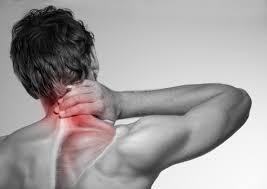Why SEO Alt Tags Matter in 2024
In today’s competitive e-commerce landscape, image optimization is a crucial part of search engine rankings. One of the most overlooked yet essential elements of image optimization is SEO Alt Tags PrestaShop. Alt tags help search engines understand the content of images, improving accessibility and boosting organic search rankings. For PrestaShop store owners, implementing effective alt tags ensures better visibility in search results and a seamless experience for visually impaired users.
Understanding Alt Tags in PrestaShop
Alt tags, also known as alternative text, are HTML attributes added to images to describe their content. These tags serve multiple purposes:
- Enhancing accessibility for users with visual impairments.
- Helping search engines index images correctly.
- Improving website SEO by including relevant keywords.
For instance, an image of a red sneaker in a PrestaShop store should have an alt tag like:
<img src="red-sneaker.jpg" alt="Red running sneakers for men - lightweight and durable">This alt tag provides a clear description of the image while incorporating relevant keywords naturally.
7 Tips to Optimize SEO Alt Tags in PrestaShop
1. Use Descriptive and Relevant Keywords
Your alt tags should accurately describe the image while incorporating keywords naturally. Avoid stuffing keywords unnecessarily. Instead, write meaningful and user-friendly descriptions that align with your product listings.
Example: Instead of:
<img src="shoes.jpg" alt="shoes">Use:
<img src="red-sneakers.jpg" alt="Men's red sneakers, breathable and comfortable for running">This enhances both SEO and user experience.
2. Keep Alt Tags Concise but Informative
Google recommends keeping alt tags short and to the point. A concise description of 5-10 words is ideal. Avoid overly detailed descriptions, as search engines may not process long alt tags effectively.
3. Avoid Using “Image of” or “Picture of”
Since search engines already recognize an element as an image, there’s no need to add redundant phrases like “Image of” or “Picture of.” Instead, focus on describing the content of the image directly.
4. Optimize File Names Along with Alt Tags
Before uploading images to PrestaShop, ensure that the file names are SEO-friendly. Instead of generic names like IMG1234.jpg, use descriptive names such as red-running-sneakers.jpg. This complements the Alt Tags SEO PrestaShop strategy and improves search engine rankings.
5. Maintain Consistency Across All Product Images
Consistency in alt tag formatting ensures uniformity and better indexing by search engines. Define a standard structure for alt tags in your PrestaShop store to make them easily scannable and relevant to the product category.
Example format:
<img src="product-name.jpg" alt="Brand Name - Product Type - Key Feature">6. Utilize AI-Powered Image Optimization Tools
AI-driven SEO tools can generate alt tags dynamically based on image recognition. These tools analyze image content and suggest appropriate alt text, making the optimization process easier and more efficient.
7. Regularly Audit and Update Alt Tags
SEO is an ongoing process. Regularly auditing your image alt tags helps identify missing or outdated descriptions. Tools like Google Search Console and PrestaShop SEO modules can assist in analyzing and improving image optimization.
The Role of Alt Tags in Mobile-First Indexing
With mobile-first indexing becoming the norm, optimizing images is more important than ever. Properly implemented alt tags contribute to faster loading times, better accessibility, and improved rankings in mobile search results. By enhancing SEO Alt Tags PrestaShop, e-commerce stores can ensure a better user experience across all devices.
Conclusion
Optimizing alt tags in PrestaShop is a powerful yet simple strategy to boost SEO performance. By following these seven tips, store owners can enhance accessibility, improve search engine rankings, and provide a better user experience. Implementing effective Alt Tags SEO PrestaShop not only helps with indexing but also drives organic traffic to your online store.

0 Comments